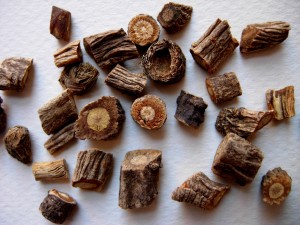
When a Chinese herbalist speaks of Fang Feng herb, he usually refers to the Saposhnikovia Divaricata root, namely Radix Saposhnikoviae, rather than the plant itself. Chinese herb is mainly produced in various regions of northern China.
Contents
Uses
It relieves symptoms associated with the common cold or flu such as chills, body aches, and Headaches. People who have Arthritis can benefit by ingesting Fang Feng as it can significantly reduce rheumatic pains. It can also be used for body spasms or to stop trembling of the feet and hands. Fang Feng can even be used to treat rashes and allergic reactions that affect the skin.
Benefits
1. Antipyretic effects. Experimental observation found that its decoction, half hour after intragastric administration, showed antipyretic effect to febrile rabbits induced by intravenous injection with typhoid mixed vaccine. And the effect could last up to 2 hours;
2. Antishock. Experiment indicated that mice receive a few times of gavage with its decoction showed certain counteraction to shock;
3. Antibiosis. Its water extract has some antibacterial effect to Pseudomonas aeruginosa, Staphylococcus aureus, Streptococcus, and Shigella. In vitro it also inhibits Microsporon lanosum;
4. Analgesia. In the experiment of mice given a gavage of its ethanol extract, it showed that its ethanol extract can significantly improve pain threshold and so did its subcutaneous injection.
Caution
Caution in patients with Yin and blood Deficiency causing spasms or heat.
Interactions
Traditionally not used with Rhizoma Zingiberis Officinalis (gan jiang), Rhizoma et Radix Veratri (li lu), and Rhizoma Dioscoreae Hypoglaucae (bei xie).
Other names
Saposhnikovia Divaricata root, Radix Saposhnikoviae
Reference
Source: Acupuncture, http://www.acupuncturetoday.com/herbcentral/siler.php
Chineseherbshealing, http://www.chineseherbshealing.com/fang-feng-saposhnikovia-divaricata-radix-saposhnikoviae/
Naturalweelbeing, http://www.naturalwellbeing.com/learning-center/Fang_Feng
